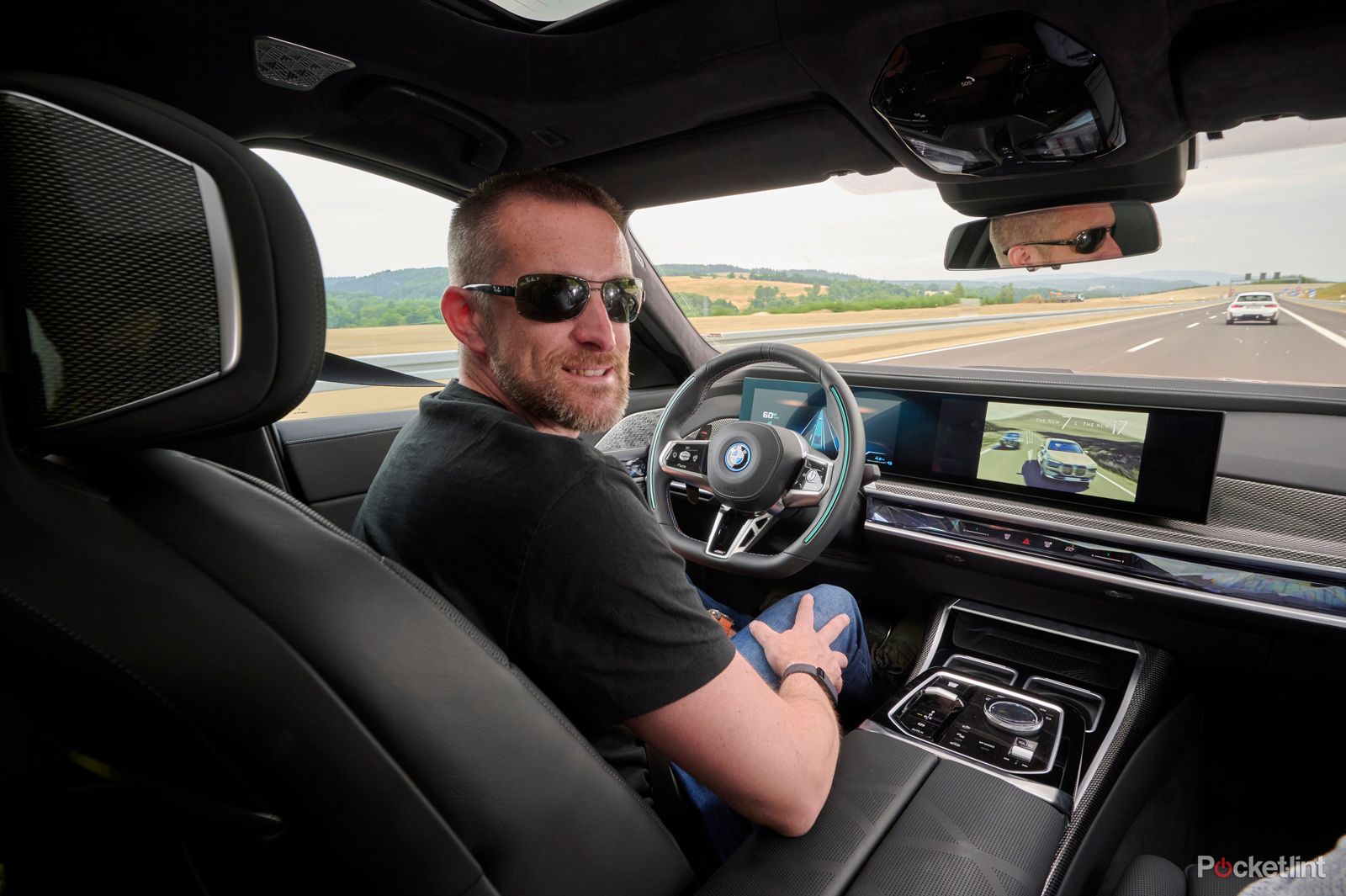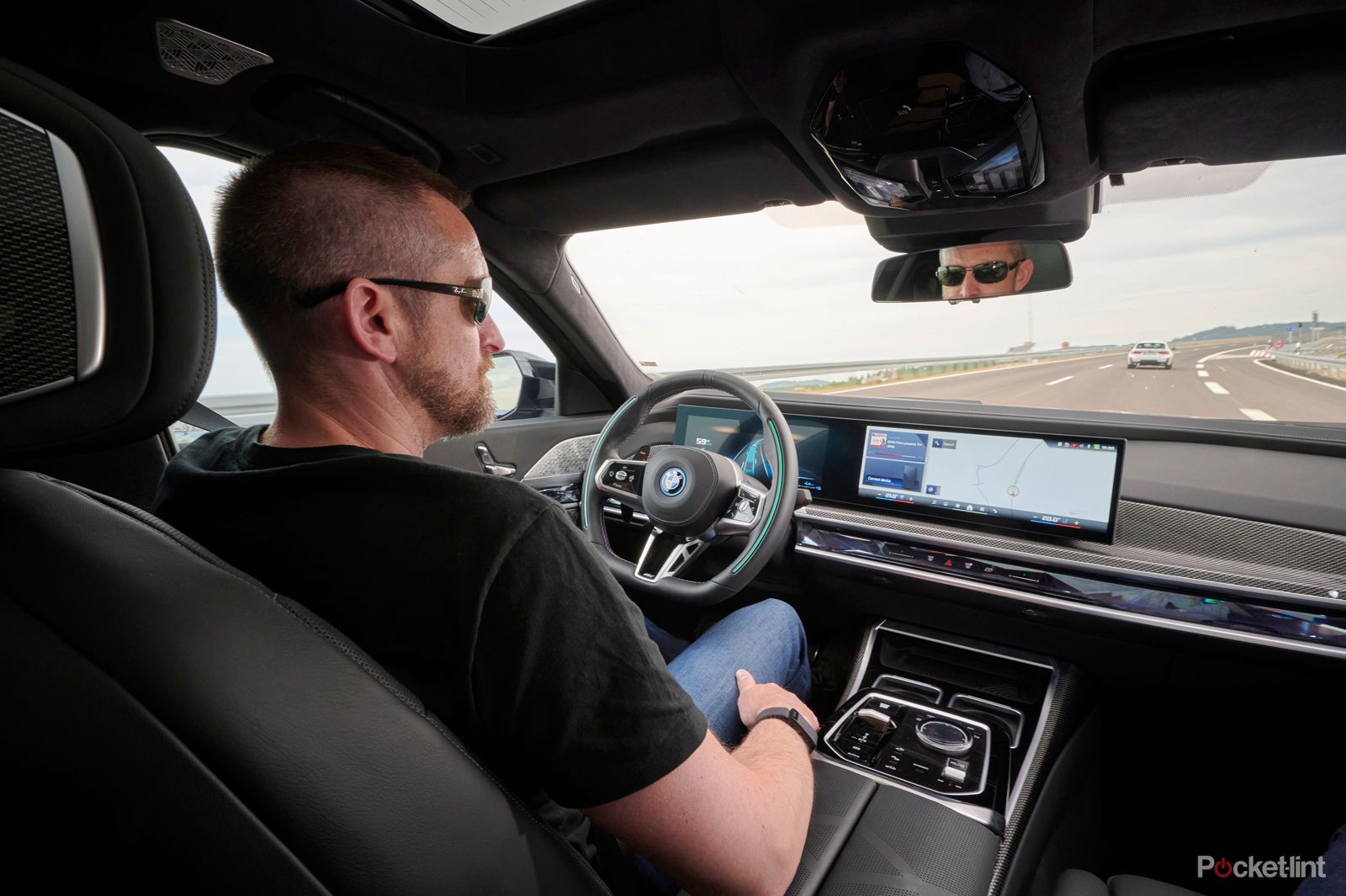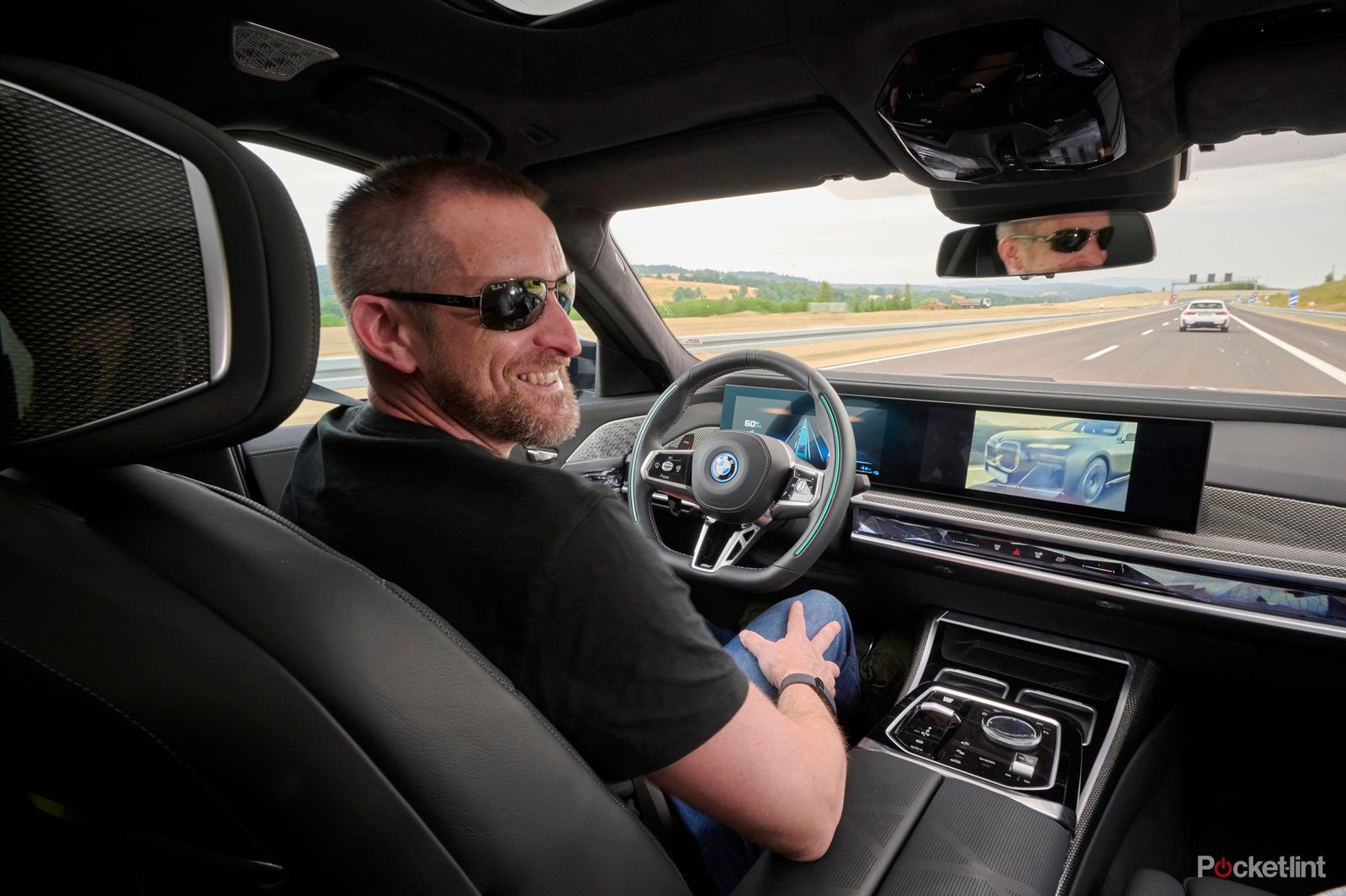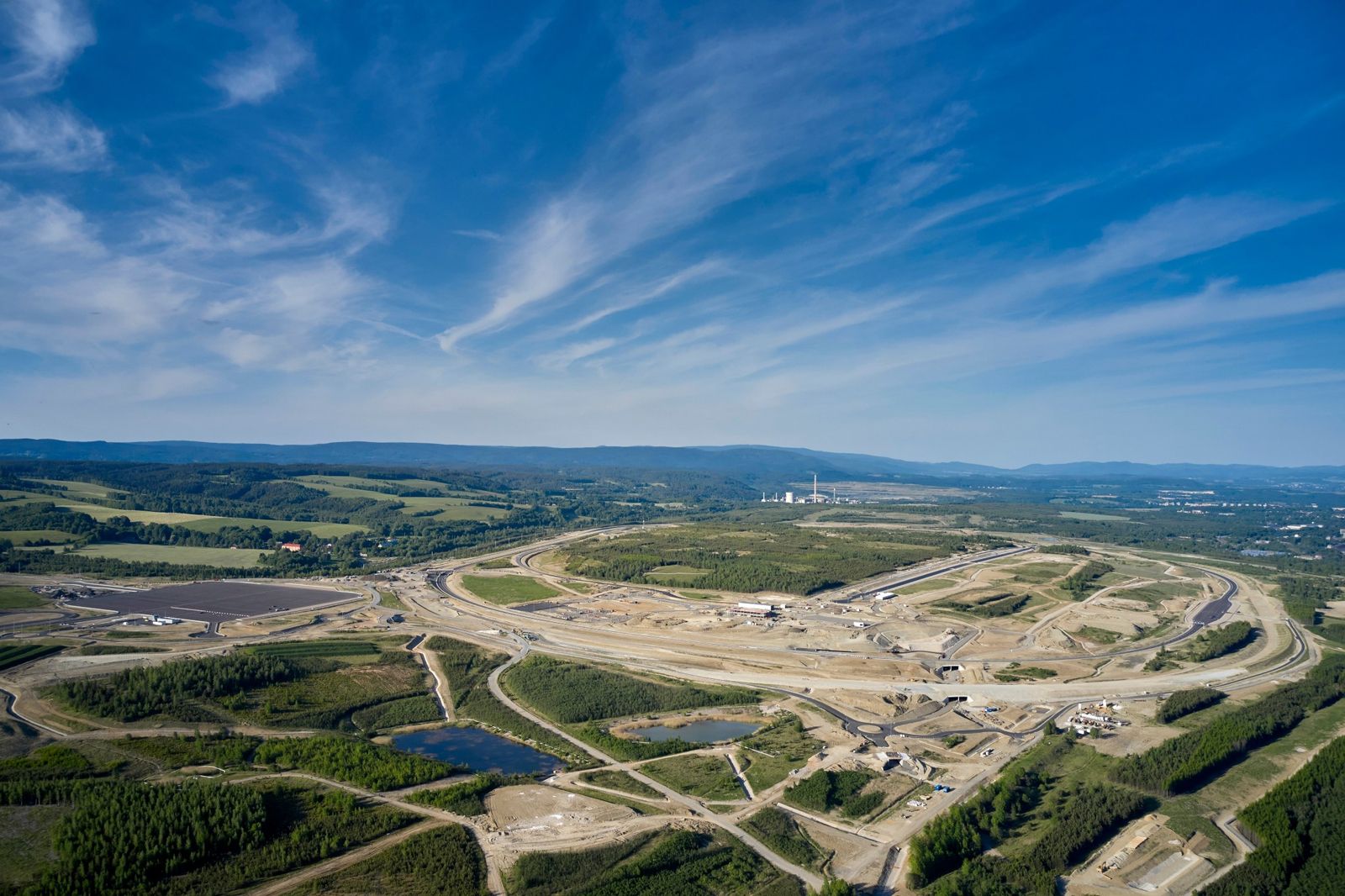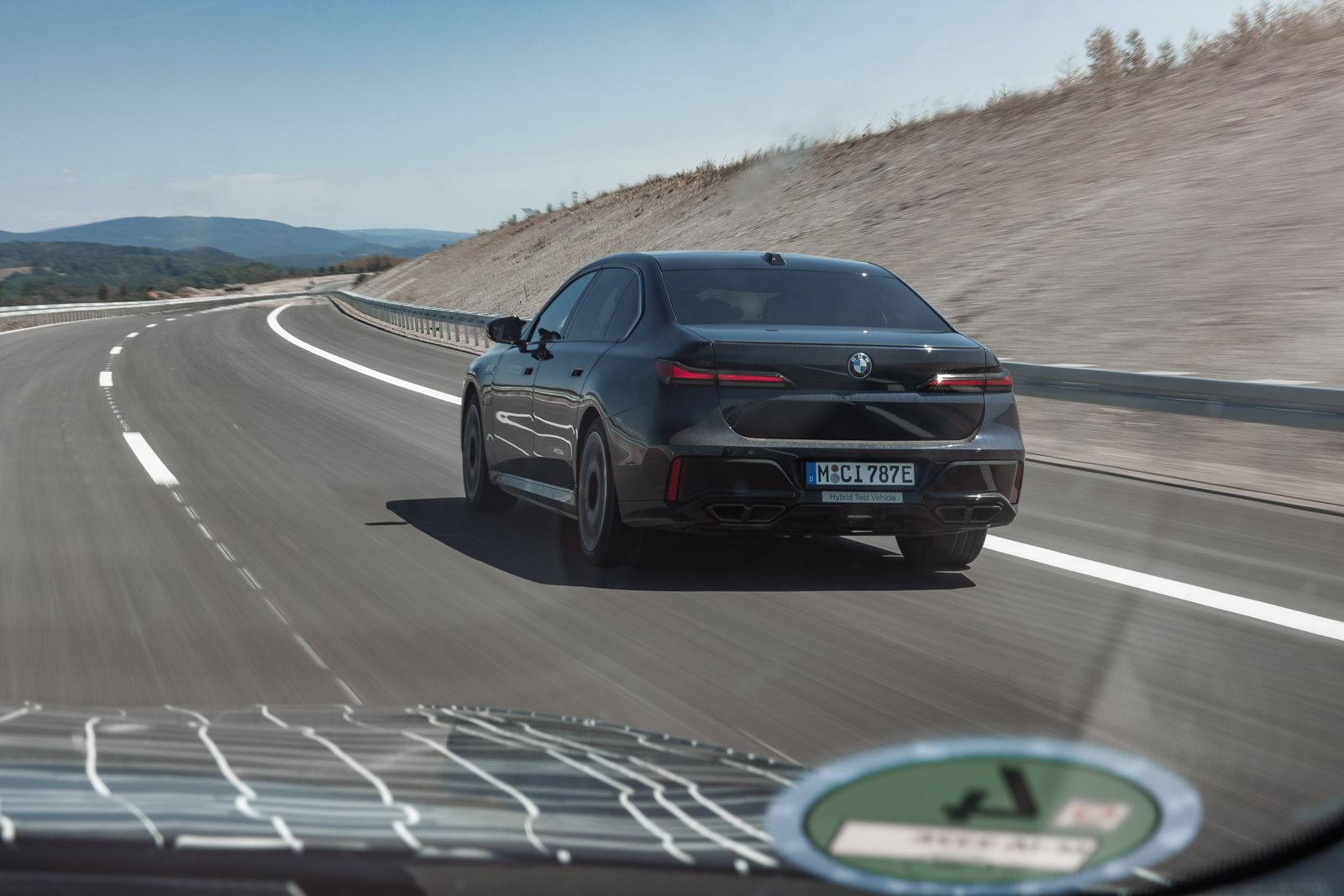Key Takeaways
- BMW's Future Mobility Development Center in Sokolov is a €300 million investment, serving as a playground for cars to create and test different driving environments.
- Level 3 autonomous driving allows the driver to be "eyes off" and engaged in other activities while the car takes control, making it more advanced than current Level 2 systems that require eyes on the road.
- Level 3 driving faces challenges - a big part of which will be communicating how it's different to Level 2 to the public.
Nestled in the rolling hills near the Czech Republic's western border with Germany, lies Sokolov. It's the home of what BMW calls the Future Mobility Development Center, or as one BMW staffer at the site told me, it's basically "a giant playground for cars". It represents a €300 million investment by BMW in the region.
One of the big facilities on site is the 6km loop, a multi-lane road designed to simulate highway conditions. It's connected to a mock village, there are dummy junctions in various styles, the ability to switch out different nation's road signs, and it's all designed to allow BMW to create and test whatever environment, in whatever country, it wants.
So when BMW invited me to sample Level 3 autonomous driving on the loop at Sokolov, I jumped at the opportunity. I say "sample" because Level 3 driving is really about being driven: the car is doing the driving and the car is watching the road, meaning that the "driver" is left free to do what they want. That's because Level 3 - currently not permitted on public roads anywhere on the planet - is what's known as "eyes off".
Current autonomous systems on the road only reach up to Level 2, or Level 2+. This is where the car can maintain speed and distance from other vehicles, can keep you within your lane and in some cases, changes lanes for you. Legally, at the current top level you can take your hands off the wheel, but you must keep your eyes on the road. I've driven the BMW i7 using this Level 2+ system in the US and I've driven Ford's system - known as BlueCruise - in the UK which offers much the same. Neither of these systems offer what I was to sample with BMW's next-gen tech.
In current systems there are cameras that watch the driver to make sure that person remains attentive to the road. If you appear to be distracted, the car will alert you to get your attention back and eventually it will intervene and bring you to a safe stop if you don't respond. In the next evolution of the system - Level 3 - you won't have to pay attention, you'll be able to look away from the road, leaving the car to make the decisions for you.
The test car we used was a BMW i7. Not the same model I've driven and reviewed, but a technical prototype that's loaded with lidar and radar systems providing more data, along with additional cameras, to give the car additional skills. And it's those skills I was here to sample, to get an insight into what Level 3 autonomy might actually mean.
Level 3 is designed to let you take your eyes off the road in busy highway conditions - but in these testing conditions only up to speeds of 60kph (37mph). It's designed to let you relax on a busy commute, allow the car to do the driving in traffic while you can do something else. Ironically, I settled down to watch some BMW adverts on YouTube.
Once the system was engaged, the car drove much like it does using the current systems, but I was able to look away, talk to my passenger (one of the researchers from BMW working on the system) and turn around to pose for the photographer in the rear of the car. With a Level 2 system, the car would have been quick to issue alerts, but I was relaxing into this new way of driving. The clever thing is that the car assesses if you're driving in the right conditions to move from the current Level 2+ system (eyes on the road) to Level 3 (eyes off the road) - with the big turquoise bars on the steering wheel showing you that the car is driving itself.
Suddenly a car swerved in front of me and hit the brakes. With my eyes off the road, there was no way I would have seen it coming. Under normal conditions, that would have likely caused an accident, but the BMW Level 3 system detected it, and was in full control of slowing the car to avoid an accident. Admittedly it was a slightly hair-raising experience, but it demonstrated that the car could cope with such situations.
I relaxed again, following the car ahead while the BMW continued to drive, allowing me to shake off the mild panic and get back to watching YouTube. But this wasn't the last test I was to be subjected to and out of the corner of my eye I saw the car ahead swerve lanes revealing an obstruction on the road. At the time I was travelling at 60mph - nearly 100kph - but as my lips parted in exclamation, the BMW was already taking action, hitting the brakes to bring me to a controlled stop so we didn't hit the object in the road.
Getting a car to drive itself is relatively easy. Many of us will have some sort of driver assistance system already that will do much of what is needed. But performing that sort of emergency braking manoeuvrer is not something current systems will do. Sampling these tests on a Level 3 system taught me a lot about what's to come.
Firstly, that the cars are very capable in the conditions I experienced. That works on highways, but it's not entirely stress-free. If your car has to take action and you're not paying attention, it's a surprise because you don't see it coming. When watching the roads, you can often see things happening - that irrational driver swerving between lanes, or that person who doesn't seem to be paying attention. That gives you clues to be ready, to slow down, to back off - and when you're not watching the road you're not ready.
Secondly, this will only work at limited speeds. While detection of obstacles and being able to watch the road to trigger emergency braking is an effective system, you're still bound by the laws of physics. If I'd been driving at faster speeds when that obstacle appeared on the road, the car would never have been able to stop before hitting it. Evolving to higher levels of autonomy to allow faster driving speeds would need more information - most likely from vehicle-to-vehicle communication, so each car understands why other cars are behaving the way they are.
Finally, explaining to the public what Level 3 systems can do compared to Level 2 is going to be complicated. At Level 3 you still need to be ready to intervene - and we currently have no idea what will be allowed and what won't. Using a smartphone is likely to remain illegal, but will you be able to eat a sandwich or read a book? Probably not. Level 3 driving will also only apply to those highway conditions, in traffic, at limited speeds - and communicating when and where these enhancements will be available is likely to be really complicated.
What's clear, however, is that car manufacturers are taking on the challenge of developing Level 3 capabilities with gusto and - legislation permitting - we'll start to see these cars on the roads in the next couple of years. Driving BMW's prototype provided an invaluable insight into where cars are going - but it does leave me wondering whether people are ready for this next step towards autonomy.

